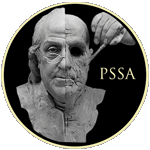Hironori (Hiro) Kawabata is a figurative sculptor based in Kagoshima, Japan. He has extensive formal training, including an MFA; and he is an art educator. From this relatively quiet part of the world, from within the nondescript studio building where he works, Hiro creates supremely vivid work. The vitality that radiates from his figures flows from a style that deftly subsumes some of the great masters of both western and Japanese sculpture—easily avoiding the pitfalls of ironic appropriation or homage—while maintaining a perspective that is thoroughly contemporary.
It is passion more than anything that animates Hiro’s work. His obvious technical proficiency and ability to intertwine artistic styles from disparate eras and regions captures the eye of the beholder, but it is the work’s passion that captures all the rest. The visceral, lasting impression produced by his art may be its most distinctive feature.
My thoughts about portrait sculpture
I love to make portrait sculpture. My primary aim is to express in sculpture the human existence. Roman ancient philosopher Marcus Tullius Cicero said, “ The face is a picture of the mind ” I agree with his words. The human face represents not only the character but also the life. So I want to express what is inside their spirits. I believe what their spirits and their minds express are their feelings. I think that the most important thing to represent in portrait sculpture is to create these feelings. Certainly, correct skull and correct muscle proportion are important, but it’s not enough. I want to capture their feelings and their atomosphere in my sculpture. For capturing these elements, the expression of eyes is especially important. I compose all of my pieces from clay, then I cast them in either bronze or resin. To the latter I apply acrylic paint. Representing eyes with clay is more difficult than with paint, because eyes aren’t solid nor are they liquid. I try to overcome these problems not only using western traditional methods like technique by 19thcentury French sculptor Jean-Antoine Houdon, but also using Japanese traditional methods like the hollow eyes of Haniwa and the glass eyes used Buddhist images in the Kamakura period. I believe that when these harmonize splendidly, a new life is born there.
